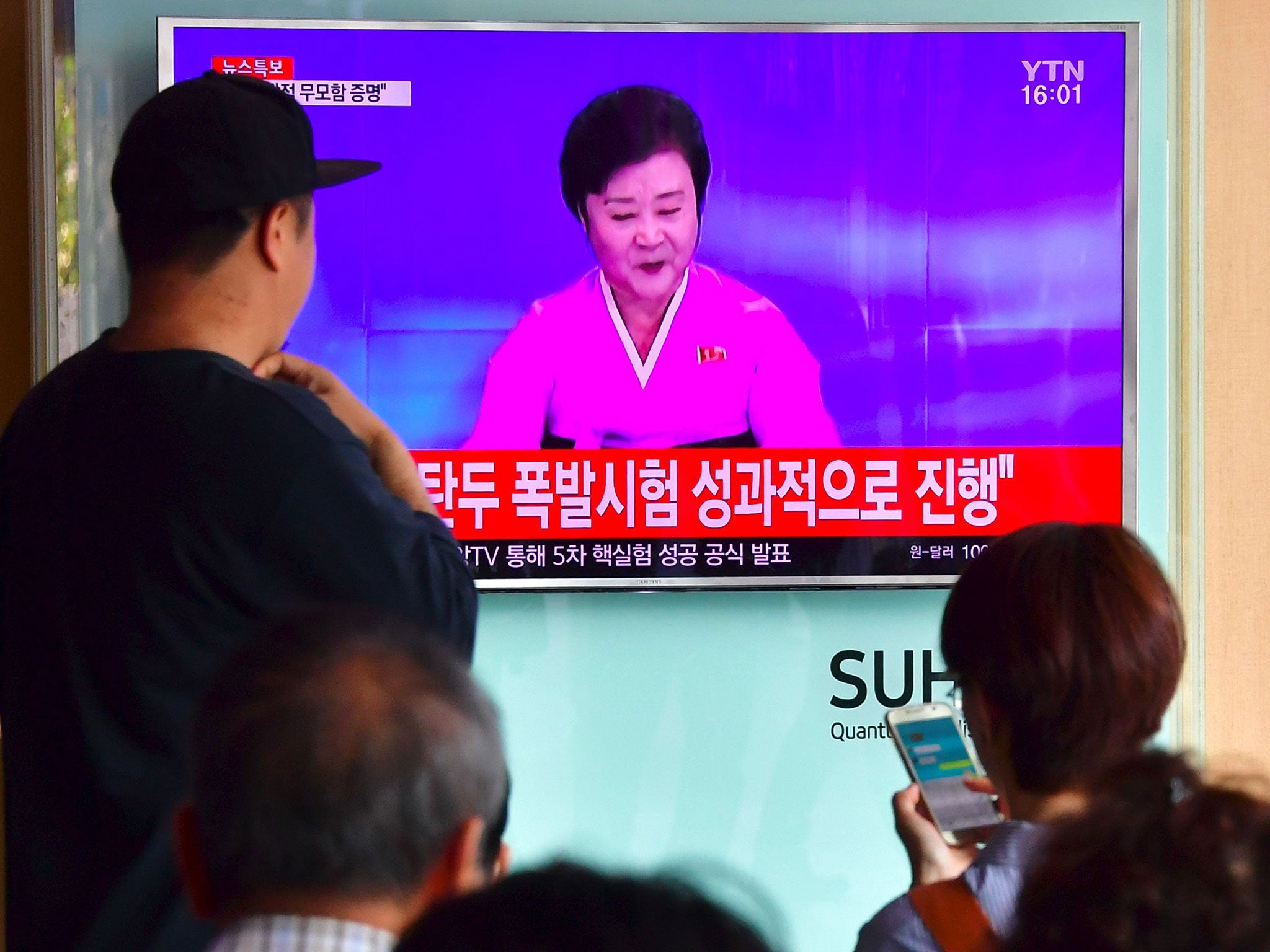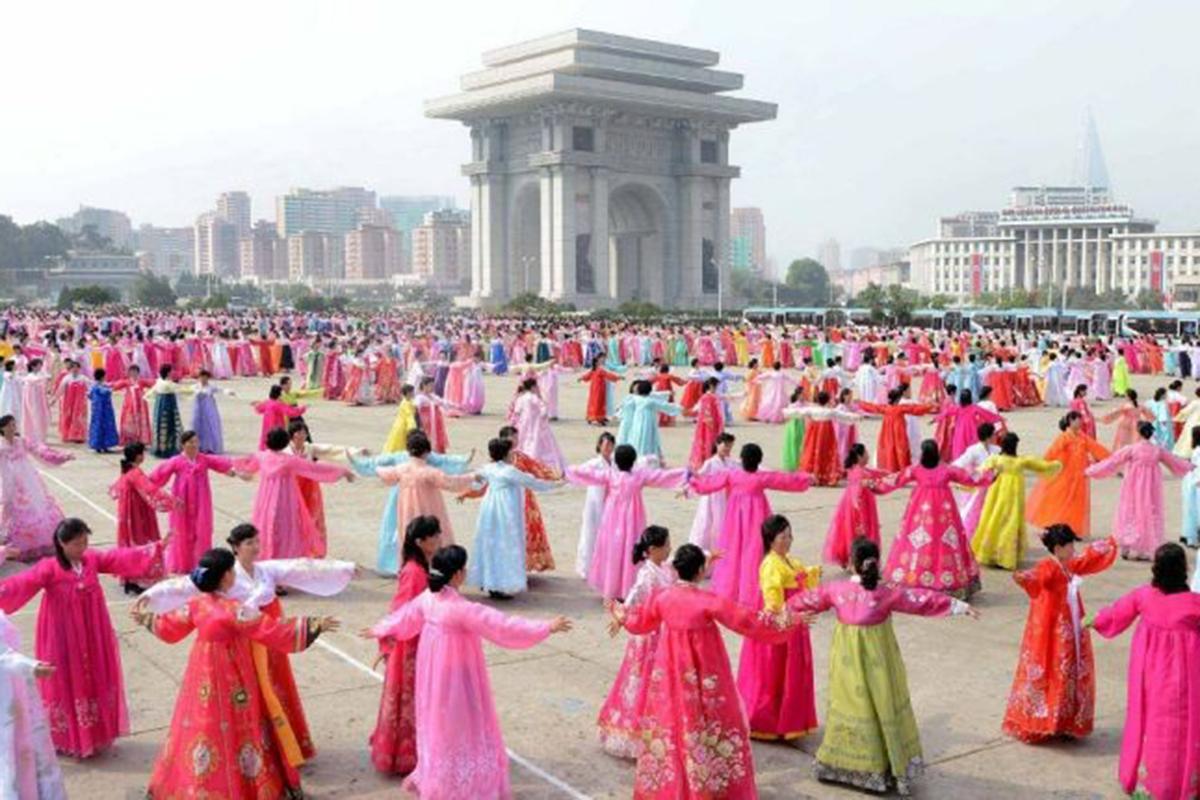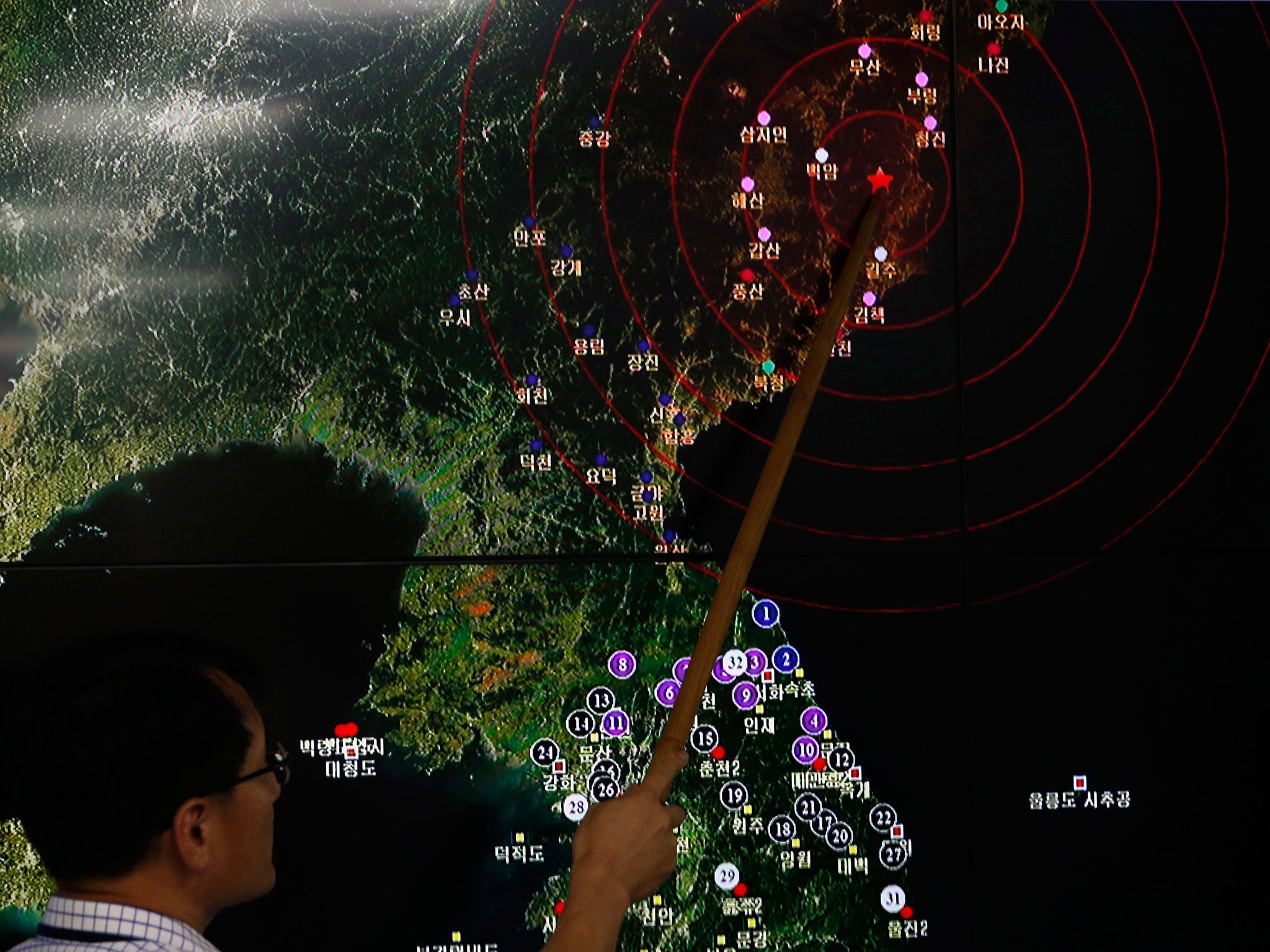North Korea nuclear test: Kim Jong-un's military claims it can mount atomic warheads on missiles to strike 'enemies'
The test was immediately branded an act of 'fanatic recklessness' by South Korea
Your support helps us to tell the story
From reproductive rights to climate change to Big Tech, The Independent is on the ground when the story is developing. Whether it's investigating the financials of Elon Musk's pro-Trump PAC or producing our latest documentary, 'The A Word', which shines a light on the American women fighting for reproductive rights, we know how important it is to parse out the facts from the messaging.
At such a critical moment in US history, we need reporters on the ground. Your donation allows us to keep sending journalists to speak to both sides of the story.
The Independent is trusted by Americans across the entire political spectrum. And unlike many other quality news outlets, we choose not to lock Americans out of our reporting and analysis with paywalls. We believe quality journalism should be available to everyone, paid for by those who can afford it.
Your support makes all the difference.North Korea has launched its largest ever nuclear test, generating global alarm with claims it is now able to mount atomic weapons on missiles for international strikes.
The world united to condemn the display of “fanatic recklessness” by Kim Jong-un’s military, with even its closest allies denouncing the explosion, which triggered a magnitude 5 earthquake.
Fresh sanctions were the expected outcome of an emergency meeting called by the United Nations Security Council but analysts were quick to point out that such measures had done little in the past to quell North Korea’s nuclear ambitions.

State media claimed the experiment, carried out at a secretive underground facility, saw a nuclear warhead that could be “mounted on strategic ballistic rockets” was detonated.
“The standardisation of the nuclear warhead will enable the DPRK to produce at will and as many as it wants a variety of smaller, lighter and diversified nuclear warheads of higher strike power,” the Korean Central News Agency (KCNA) reported
“The nuclear warhead explosion test is a demonstration of the toughest will of the Workers’ Party of Korea and the Korean people to get themselves always ready to retaliate against the enemies [including] the US-led hostile forces.”
Although it was impossible to verify the totalitarian regime’s claims, analysts at South Korea's weather agency said the explosive yield would have been 10 to 12 kilotons – almost as powerful as the 15-kiloton atomic bomb the US dropped on Hiroshima in 1945
The US Geological Survey’s analysis said it could be even stronger, nearing the strength of the even more devastating blast that destroyed Nagasaki.
The explosion was the largest recorded in North Korea following previous tests in January this year, 2013, 2009 and 2006.
It came on the 68th anniversary of the founding of the “Democratic People's Republic of Korea”, which was marked with huge state-organised dance performances in the capital.

South Korea's president, Park Geun-hye, called the test an act of “fanatic recklessness” and a sign that leader Kim “is spiralling out of control”, while Japan labelled North Korea an "outlaw nation".
Both countries could be in range of a weapon mounted on medium-range Rodong missiles, which reached the Sea of Japan after provocative launches that coincided with the G20 summit on Monday.
But analysts cast doubt on North Korea’s claim to have successfully “miniaturised” a nuclear warhead to be carried by an intercontinental weapon capable of striking the US.
Barack Obama condemned Friday’s test as a ”grave threat“ to regional security and international peace and said he would work with partners on new sanctions against Pyongyang.
"To be clear, the United States does not, and never will, accept North Korea as a nuclear state," the President said.
"Today's nuclear test, a flagrant violation of multiple UN Security Council Resolutions, makes clear North Korea's disregard for international norms and standards for behaviour and demonstrates it has no interest in being a responsible member of the international community.”
He reiterated the American military’s commitment to deploy “Thaad” missile defence system to South Korea, which has also been blamed for increasing tensions in the region and citied as a threat by Pyongyang.
The International Atomic Energy Agency, Comprehensive Nuclear-Test-Ban Treaty Organisation, Nato and European Union were among the organisations voicing their condemnation.

Even China, considered the closest ally of isolated North Korea, said it “resolutely opposes” the test and would launch a diplomatic protest, but also aimed criticism at the American military for “damaging regional strategic balance”.
The nuclear test appeared to boost Kim’s popularity among his people, beset by poverty, famine and a litany of human rights abuses and “unspeakable atrocities” condemned by a UN investigation.
Rim Jong Su, a 42-year-old resident of Pyongyang, said: “It's really great news.
"Now, I am full of confidence that if the enemies make any little provocations we will make a counter attack and we will surely win."
In Seoul, residents seemed largely unconcerned as they prepared to celebrate the Chuseok harvest festival.
Jung Yeon-su, 21, said: “People of my generation kind of doubt war will ever happen no matter what, so we tend to brush off something like this...you pay attention for a bit, but then you get numb after a while.”
While North Korea is known to have a small stockpile of nuclear warheads, experts have been divided about its ability to mount them on a working missile delivery system that could allow a long-range strike.
If “miniaturisation” has been achieved, it will raise serious concern over the capability of the totalitarian government to realise years of threats aimed at the US and other enemies.
But there is little scientific evidence to verify that North Korea has perfected the science of creating a nuclear bomb small enough to fit on a ballistic missile and withstand the physics of atmospheric re-entry.
Dr John Nilsson-Wright, head of the Asia Programme at Chatham House, said North Korea was previously thought to be two to three years away from miniaturising a weapon for long-range missiles.
“What this has demonstrated is that the commitment of the North to develop its nuclear capabilities is as strong as ever – and that is why we should be worried,” he told The Independent.
“We have to worry about the risk of a conflict…the options for the international community are getting narrower and narrower, and more and more unattractive.”
Tariq Rauf, director of the disarmament programme at the Stockholm International Peace Research Institute (SIPRI) said it was an “inescapable reality” that North Korea will keep its nuclear weapons as a guarantor of its security.
“It is time to understand that further economic pressure and coercion, economic rewards or military threats will not be successful in convincing North Korea to give up its nuclear-weapon programme, and may well have the opposite effect,” he added.
“International sanctions have not been successful against the DPRK, just as they have failed in the cases of India, Iran, Iraq, Libya and Pakistan.
“The practical way forward must be direct negotiations between North Korea and the US on the denuclearisation of the Korean Peninsula and removal of sanctions in parallel with a composite strategic dialogue…that addresses the underlying security concerns of all sides.”

Join our commenting forum
Join thought-provoking conversations, follow other Independent readers and see their replies
Comments